- Administrator
- Albums and Singles
 This latest volume of Carsten Nicolai's planned five-part series devoted to degraded samples is a bit different from previous installments, as the Xerrox vision has become a more focused and cinematic one. In Nicolai's own words, this series has increasingly been devoted to exploring more "intimate gestures and emotional sensibilities" than the meticulous sound design perfectionism and concept-driven art that he is best known for. In practical terms, that means that Xerrox, Vol. 4 mostly captures Alva Noto in comparatively abstract and almost "ambient" territory, as these fourteen songs are uncharacteristically built from slow-moving drones and sleepy, soft-focus melodies. For the most part, such an approach is appealing primarily because it reveals a more organic and harmony-focused side to Nicolai's long-running and oft-excellent project (as opposed to an evolution or improvement upon his usual fare). As such, Xerrox, Vol. 4 is a definite outlier in the Alva Noto discography. In the case of few pieces, however, a more gnarled and dissonant character unexpectedly emerges that feels like a tantalizing glimpse of a significant creative breakthrough.
This latest volume of Carsten Nicolai's planned five-part series devoted to degraded samples is a bit different from previous installments, as the Xerrox vision has become a more focused and cinematic one. In Nicolai's own words, this series has increasingly been devoted to exploring more "intimate gestures and emotional sensibilities" than the meticulous sound design perfectionism and concept-driven art that he is best known for. In practical terms, that means that Xerrox, Vol. 4 mostly captures Alva Noto in comparatively abstract and almost "ambient" territory, as these fourteen songs are uncharacteristically built from slow-moving drones and sleepy, soft-focus melodies. For the most part, such an approach is appealing primarily because it reveals a more organic and harmony-focused side to Nicolai's long-running and oft-excellent project (as opposed to an evolution or improvement upon his usual fare). As such, Xerrox, Vol. 4 is a definite outlier in the Alva Noto discography. In the case of few pieces, however, a more gnarled and dissonant character unexpectedly emerges that feels like a tantalizing glimpse of a significant creative breakthrough.
The album opens with one of Nicolai's strongest and most evocative feats of sample-layering alchemy, as "Xerrox Kirlian" combines somber synth chords, twinkling chimes, strings, ghostly voices, and a rumbling undercurrent of noise into a tender and bittersweetly melancholy dreamscape.To some degree, that piece sets the tone for the entire album and it is generally an appealing one, but the album tends to reach its greatest heights when Nicolai heads in a more sci-fi-influenced direction.His occasional forays into harsher textures are quite welcome as well, as they inject some very effective bite and dynamic intensity into the album's understated, grayscale aesthetic.For the most part, however, Xerrox, Vol. 4 makes me feel like I am walking slowly through the ruins of an abandoned city in a daze.In fact, the album almost feels like a futuristic field recording of empty, windswept streets and blowing trash, but one that is haunted by an omnipresent, machinelike-hum and drifting, curdled strains of orchestral music.While that certainly makes for a brooding and sustained atmosphere of ominousness, Nicolai is generally quite content to simply let that air of mystery and emptiness linger, only rarely parting the veil to reveal something more substantial and structured.The most vividly realized and memorable of those moments falls near the end of the album, as "Xerrox Sans Retour" builds up from a ghostly chord progression into an eerie crescendo of bleary strings, scrapes, and crackles.There are several other pieces in which form breaks through the fog, however, and they all seem to reveal a different shade of the same desolate reverie (sometimes even letting in an unexpected bit of light).  
Most of the lighter pieces appear on the first half of the album, such as "Xerrox Neige" and "Xerrox Île."The former is essentially a drone piece, but the lazily undulating tones feel considerably warmer and more organic than those that fill the rest of the album (even the rhythmic washes of crackling static feel non-threatening)."Xerrox Île," on the other hand, is one of the album's more melodic pieces, as a lovely, Celer-style string loop lazily floats across a stark landscape of distant rumble and hiss.Elsewhere, "Xerrox Voyage" takes a sleepily wistful tone, as an understated and gently twinkling melody unfolds over a corroded-sounding backdrop of deep-bass drones and spacey textures that resemble interstellar radio signals.Later, the album's longest piece ("Xerrox Calypsoid 2") explores similar territory, but heads in a more ambiguous and queasily hallucinatory direction, as Nicolai's slow-motion string samples descend in a disorienting and vaguely dissonant chord progression.I prefer the shorter "Xerrox Calypsoid 1" though, as it is enlivened with a host of buzzing, whooshing, and sputtering textures that give it a bit more textural heft.That said, the album's highlights are not all that different from the rest of the songs, as Nicolai remains unwaveringly devoted to an elusive aesthetic of hazy, slow-motion melodies over shifting sands of bleakly eviscerated-sounding drones.The overall effect feels akin to being submerged existentially, like there is some kind of barrier dampening and blurring every stimuli.      
It feels somewhat wrong to describe Xerrox, Vol. 4 as a challenging or difficult album, as I usually reserve those terms for harsh or radically structured work.This album, on the other hand, is consistently tranquil in tone and relatively conventional melodically, yet it feels fundamentally alienating and unsatisfying by design.That admittedly seems like a perplexing choice, but given how exacting Nicolai's work has been in the past, it can only have been a very deliberate decision.While that approach is not necessarily ideal from an entertainment perspective, Nicolai has always been a very cerebral and art-driven fellow and Xerrox, Vol. 4 is nevertheless an intriguing and ambitiously unusual statement that may very well be ahead of its time.In fact, it could be argued that he has birthed a new type of science fiction dystopia with this album, as it feels like the soundtrack for a future that is washed-out, crumbling, and numb rather than one populated with flying cars and glittering skylines of shiny metal edifices in unusual shapes.Actually, in keeping with Nicolai's compositional approach, it might be more apt to say it feels like a grainy, tenth generation photocopy of a futuristic city that has rendered everything a lifeless, murky gray.It is also enigmatically more than that, however, as it feels like there are small tears and ragged edges in that photocopy which reveal fleeting glimpses of something more vibrant and glimmering beneath.It is definitely a strange and complex listening experience and a very hard album to wrap my mind around.While I think I can say with some certainly that it will never be among my favorite Alva Noto releases, I certainly admire Nicolai's willingness to attempt something so complexly ambiguous and alien.No artist stays vital by repeating themselves and Nicolai deserves a lot of credit for pushing the envelope in a direction that had presumably never even crossed anyone else's mind.
Samples:
Read More
- Administrator
- Albums and Singles
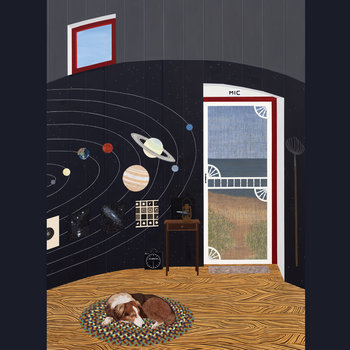
Los Angeles-based harpist Mary Lattimore returns with Silver Ladders, the full-length follow-up to acclaimed album Hundreds of Days. Since 2018, Lattimore has toured internationally, released collaborative albums with artists such as Meg Baird and Mac McCaughan, and shared a friends-based remix album featuring artists such as Jónsi and Julianna Barwick. At one of her festival appearances, Lattimore met Slowdive's Neil Halstead: "A friend introduced us because she knew how big of a fan I was and Neil and I had a little chat... The next day, I just thought maybe he'd be into producing my next record.” He was. Lattimore traditionally records her albums holed up by herself, so the addition of Halstead's touches as a producer and collaborator leaves a profound trace. "I flew on a little plane to Newquay in Cornwall where he lives with his lovely partner Ingrid and their baby. I didn't know what his studio was like, he'd never recorded a harp, but somehow it really worked."
Recorded over nine days at Halstead's studio stationed on an old airfield, Silver Ladders finds Lattimore exercising command and restraint. Her signature style is refined, the sprawling layers of harp reigned in and accented by flourishes of low-end synth and Halstead's guitar. The music can feel ominous but not by compromising vivid wonder, like oceanic overtones that shift with the tides. This material is colored by specific memories for Lattimore; "Neil has this poster of a surfer in his studio and I'd look at it each day, looking at the sunlight glinting on the dark wave. In these songs I like the contrast between the dark lows and the glittering highs. The gloom and the glimmer, the opposites, a lively surfing town in the winter turned kinda rainy and empty and quiet."
Lattimore and Halstead reformed three existing demos and improvised the remaining four songs. Among the batch she brought with her, the title track recalls a trip she took to Stari Grad, Croatia on the island of Hvar. "I spent some days there just swimming in the bay, silver ladders right into the sea." The image stuck with her when she found herself performing at a cliffside wedding overlooking the Pacific. "Before anyone showed up, I had time to set up and play and this song came to me, "Silver Ladders (to the sea)," so I made a little recording on my phone to remember it." This sketch expanded; a delicately glittering harp melody comes over the horizon, swelling and rolling towards the shore on ebbs of synth and refractory delay.
Inspired by a story that Halstead shared with Lattimore, "Don't Look" is the score to a beach-side tragedy. "It was a stunning beach with big waves," Lattimore says, “and (Neil) told me that recently, some teenagers had been out there with these surfboards that were way too light and had found themselves in trouble. The four adults that went in to save them died but the teenagers survived." The power of undertow pulls the melody, which begins in a minimalist and elegiac mode, deeper and deeper. Heavy strikes on low harp strings summon up Neptune's wrath, dashing heroism against the roar of the sea, permitting those naive enough to enter that dangerous water to exit, now less naive.
Lattimore's song titles often evoke fragments of things heard or misheard. In an anecdote from Lattimore, "I chose "Chop on the Climbout" as a title because a pilot once said, 'Folks, there's going to be some light chop on the climb out’ and I thought the language had an insider mystery that was compelling. The song reminds me of plane traveling." Listeners can feel the drama of aeronautics; the thrust of liftoff, the rumble of overhead luggage as the craft ascends into the belly of cloud cover. Passengers yearning to traverse wide distances in brief moments. The hum steadies into a mesmerizing drone, a synth on top of which Lattimore and Halstead take turns exchanging chiming leads smeared with static-laden air pressure.
These songs are clearly tales, and yet Silver Ladders is open to interpretation. Her memories — "the Cornish landscape, the hotel from the movie The Witches, the cream tea, winning the pub quiz, the Sunday Roast, the ghosts of all of the surfers who had died in the wild waves, the night walks to the top of the hill to see the moon shining on the water…" — shine through these works without defining them. In a way, much like the sea, or the sky, they belong to everyone. Such is the beauty of her craft, which stands here in unprecedented company and clarity, the confidence of an artist in full.
Out October 9th on Ghostly International.
Read More
- Administrator
- Albums and Singles

Over the space of this album, a slow and patient unfolding occurs. Strings are able to breathe, finding the space they need to move, although their movements are lurching, clunky, and convulsive. Seabuckthorn illuminates the distance – a family, a time spent together, and a beautiful summer. It has the feel of old European adventures and trips to glorious cities, markets, churchyards, and yawning fields, with a population yet to face the music of climate change or even a World War.
Years erode the features, and a scattering of distortion eats away at the music. The year in question has faded away, and time has gone way beyond evening or dusk, but Seabuckthorn brings it back and makes it relevant once again. The music is late and so is the hour, but even as the light dims, a beautiful, rusty afterglow is left behind, a dull gleam coming from a King's crown.
More information can be found here.
Read More
- Administrator
- Albums and Singles

Soundtrack for the Jan van Hasselt film Der Weiße Elefant, recorded 2015/2016.
More information can be found here.
Read More
- Administrator
- Albums and Singles
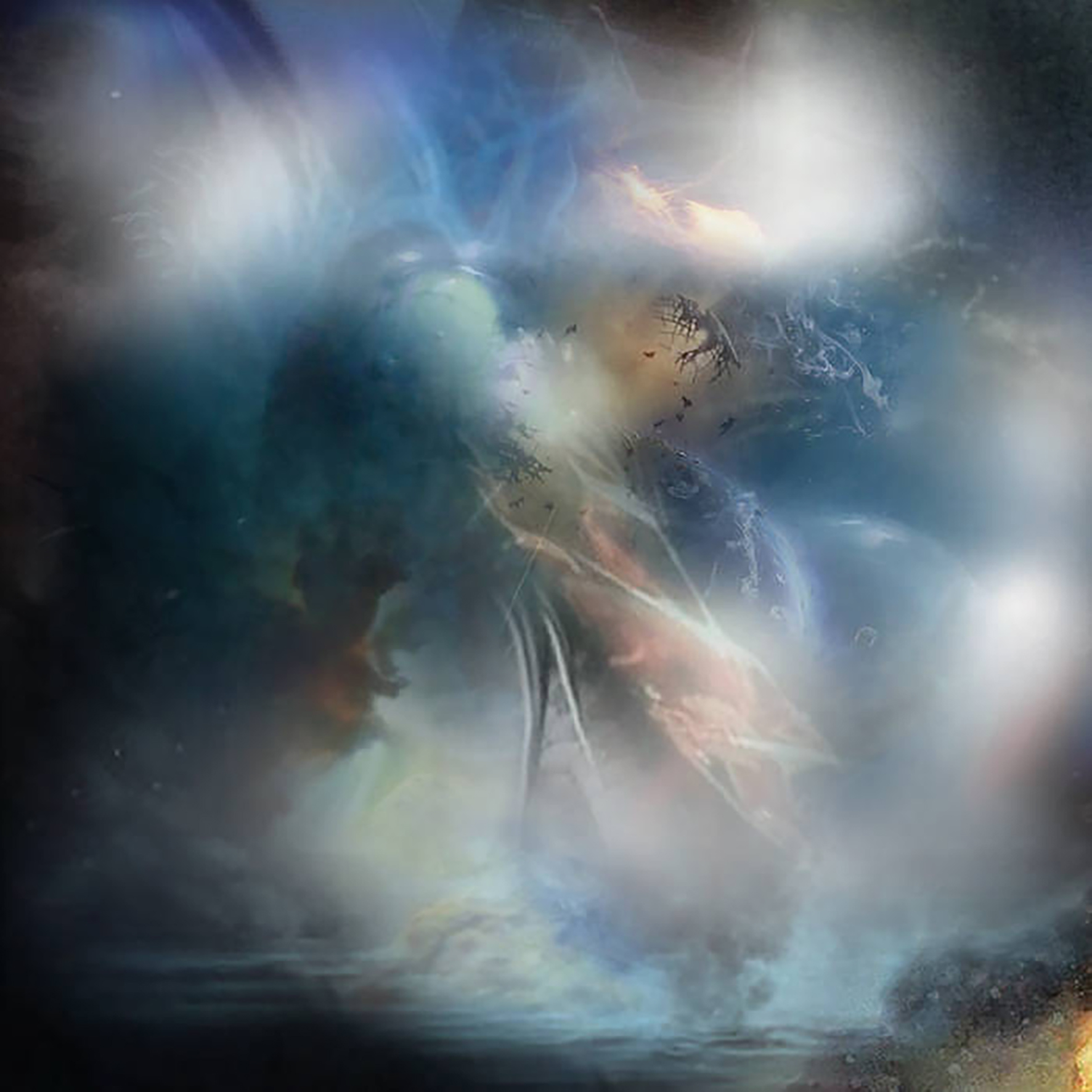 Given how many years I have been actively chasing down unique and bizarre albums, it is mystifying how most of Carl Stone's oeuvre has eluded me thus far, though his recent albums have admittedly felt almost too experimental for me (and in a hyper-caffeinated way to boot). Sometimes, however, I finally hear the right song at the right time and everything clicks into place. In the case of Stone, that revelation came in the form of the Ganci & Figli EP, wherein he gleefully transforms some anthemic contemporary dance music samples into two very divergent and inventive collages. "Figli" in particular is fun and deliriously rapturous in a way that I almost never encounter in experimental music. The same is true of the even more eccentric "The Jugged Hare," which was released earlier in the year. While I am not sure if Stone has recently perfected this side of his art or if my own sensibility has finally shifted enough to embrace what he has been doing all along, this recent pair of singles feels like the work of man who is operating on an entirely different level than his peers, playfully cannibalizing pop culture to make high art that feels like a confetti bomb going off at an out-of-control dance party.
Given how many years I have been actively chasing down unique and bizarre albums, it is mystifying how most of Carl Stone's oeuvre has eluded me thus far, though his recent albums have admittedly felt almost too experimental for me (and in a hyper-caffeinated way to boot). Sometimes, however, I finally hear the right song at the right time and everything clicks into place. In the case of Stone, that revelation came in the form of the Ganci & Figli EP, wherein he gleefully transforms some anthemic contemporary dance music samples into two very divergent and inventive collages. "Figli" in particular is fun and deliriously rapturous in a way that I almost never encounter in experimental music. The same is true of the even more eccentric "The Jugged Hare," which was released earlier in the year. While I am not sure if Stone has recently perfected this side of his art or if my own sensibility has finally shifted enough to embrace what he has been doing all along, this recent pair of singles feels like the work of man who is operating on an entirely different level than his peers, playfully cannibalizing pop culture to make high art that feels like a confetti bomb going off at an out-of-control dance party.
In classic inscrutable Stone fashion, Ganci & Figli takes its title from "an amazingly scaled, 24-hour rosticceria panineria in the city of Palermo" that he once visited with composer/saxophonist Gianni Gebbia.Whatever ties a panini place in Palermo to these two pop music cut-ups is likely to remain a mystery to me forever, but Stone's stated intention for the release was to make two different yet complementary pieces from the same set of samples ("like a prelude and fugue").I suppose it is possible that the song being deconstructed was a bit of pop music that Stone heard that day in Palermo, but my attempts to deduce the song's original language have been wildly unsuccessful thus far, as his manic sample-chopping rarely allows even a single syllable to escape unmolested.Despite that aggressiveness, Stone is remarkably sensitive to both the character and inherent soul of his source material, dramatically altering the structure and the pace while making sure the fundamental essence remains vividly intact.Ganci & Figli reminds me of an inspired variation upon classic late '90s Oval albums, except Stone uses his chopped-up and skipping approach to emphasize and enhance moments from the source material rather than obscure them.
The opening "Ganci" takes the source material in a slow-motion, dreamlike direction, as two pitch-shifted vocal loops languorously intertwine over a warm haze of synth chords and stammering word fragments.It is quite a gorgeous, endlessly shifting, and sensuous piece of music, calling to mind an underexplored niche somewhere between Clams Casino-style cloud rap and Florian Zeisig’s Enya deconstructions.The following "Figli," on the other hand, has the sped-up and spinning feel of a great experimental film: just a flickering, heavenly swirl of life and color from start to finish.Stone even manages to retain some semblance of the original piece's anthemic dynamics, as the sensory overload of tumbling, chopped-up voices eventually coalesces into a propulsively thumping kick drum groove and a wild, gibbering crescendo of stuttering horn melodies.Right from its first moment, "Figli" is a dazzling tour de force in which Stone deftly steers a manic chaos of stammering, colliding, and overlapping layers into a satisfyingly tight and vibrant pop-like format.Both sides of this single/EP are great, but "Figli" is definitely the piece that reminds me why I became excited about experimental music in the first place: there are no rules and artists are completely free to twist whatever they want into wild and inventive new forms.I dearly wish more musicians were as ambitious and cheerfully reckless as Stone in exploring the limitless possibilities of sound.While Ganci & Figli is admittedly a brief statement, it is nevertheless a perfect celebration of what is possible when a suitably warped mind and resourceful nature collide with compositional rigor and an endlessly shifting, oversaturated world of cultural stimuli eagerly waiting to be hacked apart and repurposed.
Samples can be found here.
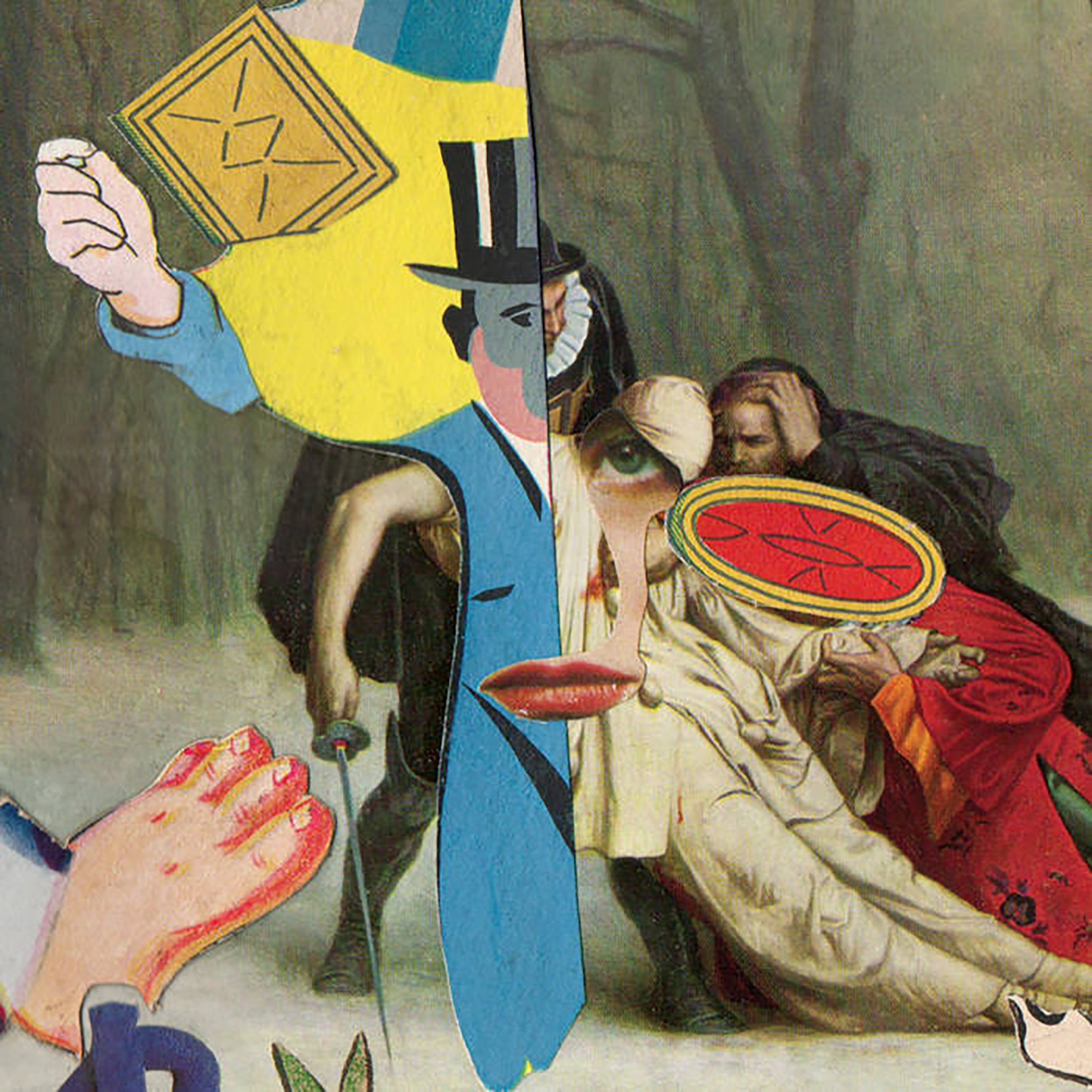 The "Au Jus/The Jugged Hare" single, released earlier this spring, is very similar to Ganci & Figli in its compositional approach, as both pieces are stuttering and manic MAX-generated deconstructions of fare that was originally far more straightforward and melodic.
The "Au Jus/The Jugged Hare" single, released earlier this spring, is very similar to Ganci & Figli in its compositional approach, as both pieces are stuttering and manic MAX-generated deconstructions of fare that was originally far more straightforward and melodic.
In fact, "Au Jus" is an even a more concise exploration of the same stylistic territory, resembling a mainstream pop/R&B jam that has been chopped to pieces and reassembled into a wildly different bit of dance pop that feels like it was composed by a psychedelic woodpecker.While it is far too fragmented to quite describe as melodic, "Au Jus" nevertheless feels like a coherently structured piece with a pleasingly erratic and kaleidoscopic groove.More importantly, Stone executes that groove with all the skill and finesse of a veteran techno producer, seamlessly manipulating dynamics and intensity as he builds to a volcanic crescendo of jackhammering loop assaults.The whole thing sounds like it was inspired by strobe lights, except the strobing effect is deliciously unpredictable in both tempo and intensity, resulting in a rapid series of snapshots with entirely new transitions and context.And, of course, an exhilarating sense that the whole swirling cacophony could go completely off the rails at any second.
One could argue that the following "The Jugged Hare" actually does go completely off the rails, albeit in the best way possible.Given how aggressively Stone mangles his source material, it is not entirely easy to guess what the piece originally sounded like, but it seems to have been a cheery piece of banjo- and flute-driven folk music.It also sounds like a cheery piece of banjo and flute-driven folk music after Stone's intervention, but a considerably more deranged and sped-up one, as the vocals are diced into a frenetic swirl of yodel-like fragments.Amusingly, I have seen the "The Jugged Hare" described elsewhere as "maddening," which is an understandable conclusion, as it calls to mind a children's TV show being played at double-speed while a madman mischievously plays with the saturation and hue of the bright primary colors.I quite like that effect though, as it makes for quite an unhinged and entertaining listen.Also, Stone is not the sort of artist who is content with merely creating something wildly ridiculous or crazy-sounding, as the piece's relentlessly insistent cheer gets pulled apart in the piece's final moment to reemerge as an unexpectedly poignant locked-groove-like outro.While it does not hold up quite as well to repeat listening as Ganci & Figli, "The Jugged Hare" still feels like one hell of an artistic statement, boldly stepping outside the bounds of what is cool and trendy to indulge a breathless, candy-colored plunge into surreal madness.
Samples can be found here.
Read More
- Administrator
- Albums and Singles

An end and a new beginning. Kommuniqué Zéro is the debut outing of new Black To Comm related entity Mouchoir Ètanche. And it is the final release in Dekorder's 10-Year Anniversary Hybrid-Vinyl Series (a mere 7 years too late). Combining real and fake acoustic instrumentation, sampling, field recordings and excessive yet inaudible post production this is a powerful statement of intent. Influences are ranging from (French) Classical & Opera to the anecdotical compositions of Luc Ferrari, Chinese Opera, Sacred Music, Collage and Free Improvisation.
Marc Richter records as Black To Comm for Thrill Jockey, Type and Dekorder and as Jemh Circs for his own Cellule 75 imprint. He also produced soundtracks and acousmatic multichannel installations for institutions such as INA GRM Paris, ZKM Karlsruhe and Kunstverein Hamburg.
The Dekorder 10-Year Anniversary Hybrid-Vinyl Series so far included LPs by Pye Corner Audio, Excepter, Experimental Audio Research, Vindicatrix, Kemiallysät Ystävät, Ensemble Economique, Alien Radio, Black To Comm and Le Révélateur.
More information can be found here.
Read More
- Administrator
- Albums and Singles
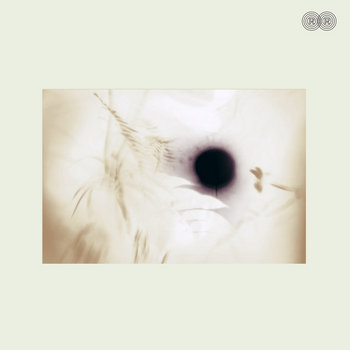
Drones for keeping sane. Music for adapted Benjolin (Miasmachine), Pitch-shifter and Echoplex. Made in Schöneberg, Berlin, April 2020 by Erik K Skodvin. Mastered by Martyn Heyne / Lichte Studio.
Rrose Sélavy - RR#02
More information can be found here.
Read More
- Administrator
- Albums and Singles

A Bit Too Far is now available digitally here
We are offering this as a pay what you want release.
All proceeds are being donated to Glory Temple Ministries in Miami.
Pastor Ronae Cambridge says: 'Glory Temple Ministries is a place that offers an incredible worship experience in a nonjudgmental way: all are welcome at Glory Temple.
We believe that by teaching the gospel of Jesus Christ, lives will be changed.
We carry out the teachings of Jesus through our outreach of feeding over 10,000 people a month, offering clothing, adult diapers, baby items, and other personal hygiene products (when available) to those who are in need. We offer prayer and counseling.'
Lyrics are forthcoming at: https://www.littleanniebandez.com
Read More
- Administrator
- Albums and Singles
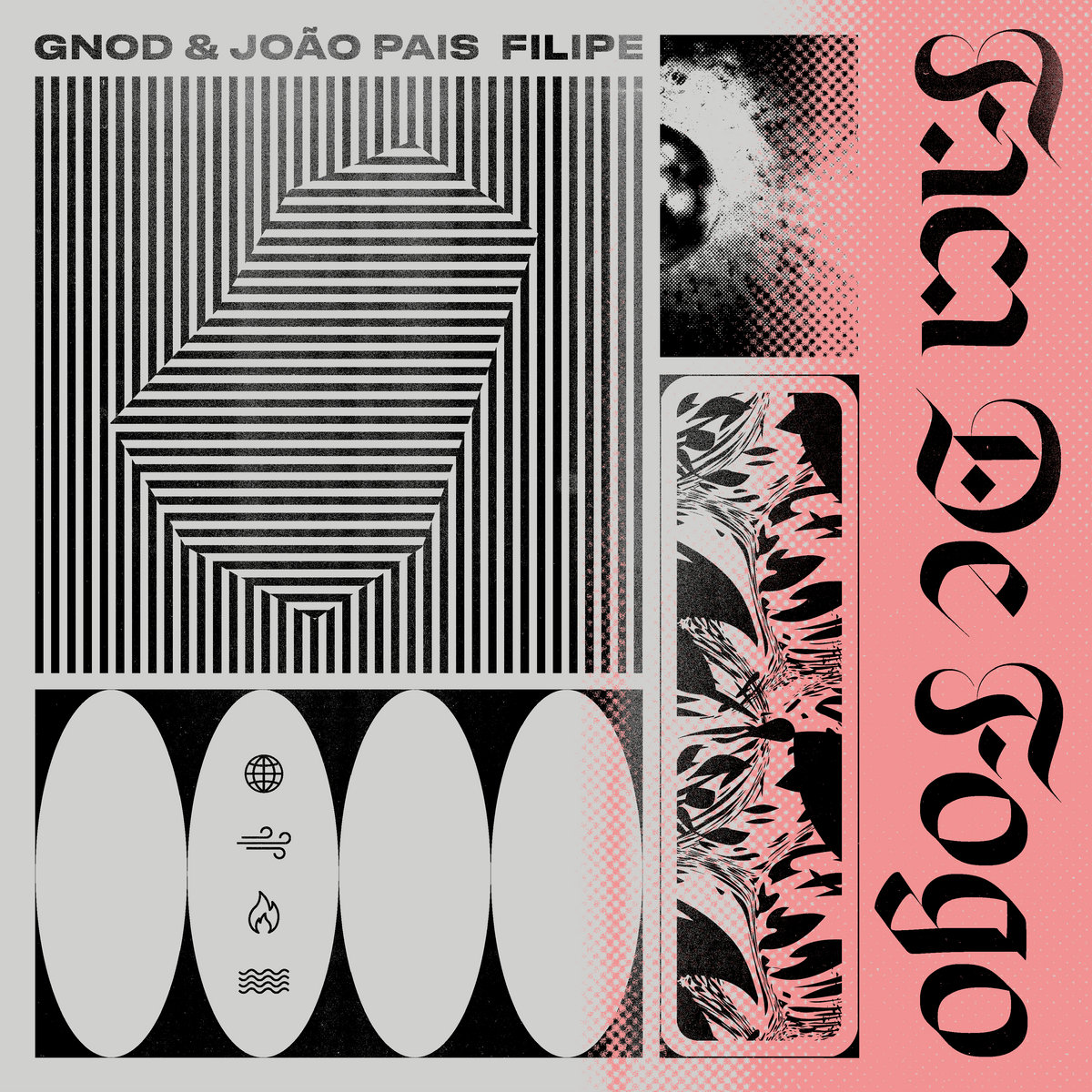 GNOD has made a career —a lifestyle —as a creative collective of musicians that weave together rhythmic, trance-inducing psychedelia and cacophonous pandemonium, unafraid of experimentation across genres. For this release, they connected with Portuguese experimental percussionist João Pais Filipe after meeting up at the Milhoes de Festa event in Barcelos, Portugal. This resulting experiment, improvised over 3 days and recorded in four at João's metal shop, was originally intended to premiere at the (now-socially distanced) 2020 Supersonic Festival in Birmingham, England. Overflowing with meditative tribal percussion and ritual, shamanic musical mantras, these four lengthy tracks ride a rollercoaster of moody atmospherics, Kraut-driven psychedelia and industrial mechanization, and will take an already widened musical mind for a ride.
GNOD has made a career —a lifestyle —as a creative collective of musicians that weave together rhythmic, trance-inducing psychedelia and cacophonous pandemonium, unafraid of experimentation across genres. For this release, they connected with Portuguese experimental percussionist João Pais Filipe after meeting up at the Milhoes de Festa event in Barcelos, Portugal. This resulting experiment, improvised over 3 days and recorded in four at João's metal shop, was originally intended to premiere at the (now-socially distanced) 2020 Supersonic Festival in Birmingham, England. Overflowing with meditative tribal percussion and ritual, shamanic musical mantras, these four lengthy tracks ride a rollercoaster of moody atmospherics, Kraut-driven psychedelia and industrial mechanization, and will take an already widened musical mind for a ride.
Having followed GNOD for some time now, I look forward to their many varieties of sound exploration. WIth a fervent following, the collective has been mistaken for a quasi-religious assemblage by the uninitiated with album titles like InGnodWeTrust, but if any religion is present, it is of the divine in music. Pushing the boundaries of ambient, industrial, noise, and jungle, the group has a residency at The Islington Mill in Salford, UK that far exceeds sound to include light and art installations which serves as their creative workspace, as well as to house members. Their sound is genreless from album to album, generally freeform in production, yet with a consistent honoring of largely western-driven industrial sounds.
Percussionist and instrument designer Filipe plays in multiple experimental and rock outfits, having collaborated with Z‚ÄôEV, Damo Suzuki (Can), Rafael Toral, Swiss composer Fritz Hauser, free jazz saxophonist Evan Parker, and a myriad of others. His addition to the collaboration tones down the often inorganic underpinnings of GNOD‚Äôs craft; while the guitars and noise elements are still apparent, these are not as frequently at the forefront of the music, instead allowing Filipe‚Äôs organic rhythms to serve as the foundation. Largely instrumental, only the title track is imbued with distorted vocals. Faca De Fogo, which translates to "Knife of Fire" in Portuguese, consists of 4 minimal, lengthy tracks with titles that further represent the organic flow. Each track focuses on the four elements of matter: "Faca de Terra" (earth), "Faca de Ar" (air), "Faca de Fogo" (fire) and "Faca de Água" (water).
GNOD brings a spacey and psychedelic vibe to the party with synthetic instruments such as samplers, loop stations and noise machines, but Filipe’s passionate expertise on his massive assortment of percussive instruments brings a pulsing tension to the table: modified bass drums played with hands and sticks, tuned toms, homemade cymbals, as well as snares and a healthy dose of ominous gong. Bass, guitar, and clarinet flesh out the sound, but in all cases ride the waves of rhythm: Filipe is in control, while GNOD learn from the master.
In essence, this is exactly what GNOD seek to do: learn and grow, constantly pushing the boundaries of what they do, and who they are. Both collaborators have promised there will be more records in the future. I, for one, am hoping this is sooner, rather than later.
Read More
- Administrator
- Albums and Singles
 As Scratched Glass, Nicol Eltzroth Rosendorf (alongside Jon Lukens) has released two stripped down tapes riddled with obscure sounds and intricate, nuanced production. Minimal, yet rich; dark, yet inviting, they were a study in contrasts and contradictions. For Big Other, he not only has opted for the vinyl format, but also working under his own name. Indicative of change, the record is certainly a different sounding one based on his previous work. With the integration of rhythms and the vocal contributions of Jarboe, but still featuring just the right amount of abstraction, the final product feels like the natural evolution of a composer/producer who had already set a high water mark before, but continues to push ahead.
As Scratched Glass, Nicol Eltzroth Rosendorf (alongside Jon Lukens) has released two stripped down tapes riddled with obscure sounds and intricate, nuanced production. Minimal, yet rich; dark, yet inviting, they were a study in contrasts and contradictions. For Big Other, he not only has opted for the vinyl format, but also working under his own name. Indicative of change, the record is certainly a different sounding one based on his previous work. With the integration of rhythms and the vocal contributions of Jarboe, but still featuring just the right amount of abstraction, the final product feels like the natural evolution of a composer/producer who had already set a high water mark before, but continues to push ahead.
The abstraction and use of unidentifiable sounds that was so prevalent with Scratched Glass are still apparent throughout Big Other, but for most of the six pieces presented here it is used sparingly to flesh out the more commanding sounds of drums, voice, and guitar.The low contrabass rumble that opens "Thrown Into Being" would not have been out of place on one of those earlier cassettes, but the live percussion and distorted guitar that are later added make for a very different sound.The pummeling drums and buzzing guitars result in a brilliant sense of tension that builds and builds before relenting to elegant, electronic spaces.
The album's centerpiece, "New Heart," is cut from a similar cloth, but with Rosendorf going off in an entirely different sonic direction.Twinkling passages of electronics lead off as Jarboe's vocal is delicately weaved in.Her wordless performance recurs throughout, befitting the simultaneously dark and inviting mix of various instruments and treatments.As before, Rosendorf brings in commanding drum rhythms, processed to give an undeniable level of intensity and demonstrates his simultaneous skills in sound design as well as composition.With a massive sense of depth and swirling electronics and voices, it is as ominous as it is beautiful.
On the other side of the record, Rosendorf eschews the prominent rhythms for greater variations of tone and texture that may be somewhat different overall, but complement the first two pieces perfectly."Several Days Later I Got Up the Nerve to Look at Myself in the Mirror for the First Time" begins calmly enough.Droning electric piano is complemented with jagged, metallic FM bells and chimes giving a bleak melodic accompaniment to the textural hum.On the surface it is all pleasant, but there are hints of a repressed, malicious force that is just there waiting to be unleashed. Around the midway point, that darkness breaks through in the form of harsh guitar and electronic processing that pounds through the initially lighter mix.Again he works with contrasts, alternating between the softer and harsher sounds throughout.
The album ends on a three-song suite that again demonstrates Rosendorf’s penchant for working with contrasts and juxtapositions.The first segment, "Shegiah," is a surprising mix of slightly jazzy piano and contrabass.He is working with conventional sounds, but with the skeletal production and sparse arrangement, there is a distinctly morose quality to the piece.In the transition to "Golden Repair" he drops the sparseness for a surge of distorted cello and electronics instead.Brought in tastefully, the dissonant sounds envelope much of the sound that preceded it.By the concluding "A Shield of Ceilings in the Drift" Rosendorf brings everything full circle with the distortion retreating and the piano returning, fleshed out with additional instrumentation and production to close on a calm, somber note.
One of the strengths of Big Other is Rosendorf’s deftness in blending together a myriad of sounds and moods, often into a single piece, perfectly and effortlessly.The smoothness in the transition from the pounding, suspense score rhythms of "Thrown Into Being" into a delicate electronic conclusion is performed expertly, and the simultaneously sacred and profane sounds of "New Heart" are so expansive and diverse all within a single piece.With Scratched Glass, Rosendorf proved himself an expert at creating idiosyncratic sounds and complex, multifaceted production, but with Big Other he has pushed that into a beautiful, multidimensional colossus of a record that is as complex as it is unique.
Read More
- Creaig Dunton
- Albums and Singles

Brainwashed and Negative Capability Editions are proud to exclusively premiere the new album by Nicol Eltzroth Rosendorf, Big Other, and the video for "New Heart." The entire album can be streamed via Bandcamp by clicking here before its release on August 21. "New Heart," (video available here) featuring guest vocals by Jarboe, showcases her expansive voice, adding a human element to the menacing, swirling electronics and guest performer James Joyce’s powerful drums. As Rosendorf began to construct the piece, he says he could hear the ghost of Jarboe's voice throughout as he was composing and mixing, persuading him to ask her to participate. Also an accomplished visual artist working with the likes of Axebreaker, Locrian, and Retribution Body, the accompanying video directed by Rosendorf was filmed during COVID-19 quarantine.  Traveling through a forest, he captures both the isolation and terrible gravity of our current shared experience, but also the potential of hope and new life. Big Other will be released on limited vinyl and digital via Negative Capability Editions on August 21.
Read More

